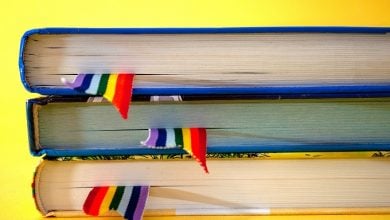
Dyslexia is an alternative way of thinking that affects an estimated one in ten New Zealanders, including 70,000 school children.
It is almost inevitable, then, that every teacher will work with at least one student with dyslexia during their career.
Read the Term 1 edition of School News HERE
Dyslexia is often understood as difficulties with reading and writing, which can extend to numeracy and musical notation. Students with dyslexia tend to think in pictures rather than words, and process information in a different part of the brain to word-based, neurotypical thinkers. It occurs across a range of intellectual abilities, and affects each individual differently.
Rather than understanding specifics first, dyslexic thinkers learn by developing a big picture or the overall idea of a concept, and then filling in the details. This means dyslexics are often credited as out-of-the-box thinkers, with the ability to come up with new strategies and solutions to problems.
Much more than trouble with reading and writing, then, dyslexia can impact skills including planning and organising, short-term memory and concentration, and information processing. This can make the classroom a particularly challenging environment.
All students with different learning needs, including dyslexia, must be supported to achieve their potential, and identifying dyslexia early is crucial. School’s should be equipped with the necessary screening tools and equipment, as well as trained staff, who can assess children for dyslexia, and provide ongoing screening, support, and feedback as required.
It is also important to provide accurate information to parents about what dyslexia is and how their child can be supported. With some learning adjustments and supports, dyslexic students can thrive in the classroom and will achieve on par with their classmates.
The Ministry of Education notes that for dyslexia, as with all different learning needs, the student should be seen as a whole person, rather than a specific challenge. Work with the student to build an understanding of their specific needs, and identify supports for learning and wellbeing. Including a range of different activities in a learning program, including creative activities, group work, written and oral contributions, and tactile and sensory elements can help cater to the learning preferences of all ākonga.

A range of assistive learning technologies are available to support dyslexic students. Speech recognition software, writing assistance software, reading focus tools, and text to speech readers can all be used in the classroom and at home. A simple first step may be letting students experiment with different font style, colour and size when reading texts online to determine their optimal settings for learning.
Ongoing, regular PLD around dyslexia is important for all educators. Spotting early indicators, and providing sustained support for students as needed will ensure all students reach their potential. External providers can be engaged to deliver whole of school sessions to teaching staff. Learning Support Coordinators, and teachers who work closely with dyslexic students may benefit from short courses or workshops.
A kete of free dyslexia resources for educators and parents, designed to help students learn in ways that work best for them, is available from the Ministry of Education. External providers also offer a range of training, support, and equipment for navigating dyslexia in the classroom.
DTSL Assistive Technology has been working in the education sector for more than 25 years, providing solutions to overcome barriers and enhance lives.
During this time, the team has worked closely with MOE, schools, RTLB and parents to provide tools for dyslexic learners. Many of the tools DTSL provides are now becoming commonplace within schools, which creates a more inclusive environment for those students living with dyslexia and enables them to feel part of the class, rather than on their own.
Word prediction, speech-to-text, word-banks, and phonic assistance are fundamental parts of the toolkit, and DTSL provide several software packages that bring these together. Another key tool is the reading pen, which allows users to scan text and have it read aloud, have words defined using the built in dictionary, and record thoughts or reminders using their voice.
DTSL offers trials of a wide range of the tools it supplies, which gives students and schools a chance to test in “real-world” settings and get important feedback.
The DTSL team feel incredibly lucky to be able to support students in their literacy journey and are always happy to give advice.









